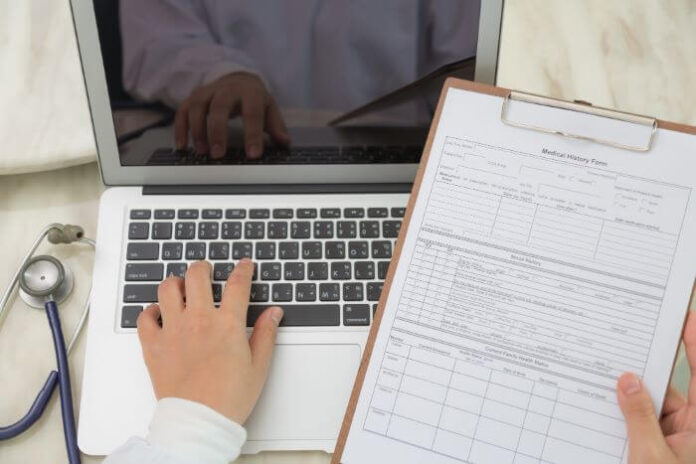If you’re a healthcare provider, you know the importance of having streamlined billing procedures in place. Unfortunately, many traditional processes for collecting payments and reimbursing claims can leave both patients and providers feeling frustrated with each other’s paperwork delays.
An increasingly popular solution is to incorporate a patient portal into your medical billing software that offers staff members quick access to important documents and creates an efficient system for managing accounts receivable.
With this type of portal, it’s easier than ever to ensure that payment tracking systems are accurate while offering more secure options for collecting insurance remittances.
In this article, we will be showing you what a patient portal is and how you can implement it into your current billing process could be the game-changer you have been hoping for. This is your chance to improve customer satisfaction rates in your practice while also effectively streamlining accounts receivable.
What Is A Patient Portal For Billing And How Can It Help?
As healthcare continues to become more digital, patient portals for billing have emerged as a convenient way for patients to manage and pay their medical bills. Essentially, a patient portal is an online platform that lets patients access and view their medical records, including billing information, in one place.
With this tool at their fingertips, patients can easily review their bills and make payments with just a few clicks. Not only does this streamline the payment process, but it also reduces the likelihood of errors and simplifies communication between patients and healthcare providers.
Patient portals for billing are a win-win for both patients and providers, providing a convenient and efficient solution for managing medical bills.
Why Do You Need This Tool?
Gone are the days of getting paper bills and manually paying them off. With the rise of patient portals, healthcare has become more convenient than ever. And one of the biggest advantages of using a patient portal is the ease of billing.
Not only is it much simpler to keep track of all your medical expenses, but you can also make payments and receive receipts electronically. This saves you both time and effort and also reduces the risk of errors that come with traditional billing methods.
With a patient portal, you can seamlessly manage your healthcare expenses in a hassle-free way that’s both modern and efficient.
Features of a Good Medical Billing Software That Helps Simplify the Payment Process
In the world of medical billing, efficiency is everything. That’s why choosing the right billing software is crucial. A good medical billing software should provide features that help simplify the payment process, making it easier for healthcare providers and their patients.
First off, it should streamline the coding and billing processes to ensure timely and accurate payments. It should also have a robust reporting system to help with financial analysis and decision-making.
Additionally, a user-friendly interface and support for multiple payment options are essential to ensuring a seamless user experience. Ultimately, good billing software should take the headache out of medical billing, saving healthcare providers valuable time and resources.
Ways to Increase User Safety and Security When Using a Patient Portal for Billing
Now you know how important patient portal could be to the healthcare industry. Not only does it provide convenience to patients by enabling them to access their health records and pay bills online, it also comes as a huge relief to healthcare providers.
However, with convenience comes the risk of cybercrimes such as identity theft and data breaches. Therefore, taking measures to increase user safety and security is of utmost importance.
One way of doing this is by using a strong and unique password that includes a mix of letters, numbers, and symbols. Another way is by enabling two-factor authentication, which requires the user to provide two forms of identification before logging in.
By taking these simple steps, patients can be assured that their sensitive information is safe and secure. Your patient will not be as happy knowing that you now have patient portal implemented in your system as when they know you also have security measures in place to protect their privacy. So, this is one part you don’t want to take with levity.
Tips and Best Practices to Ensure Smooth Transactions When Using the Portal
Using online portals for transactions can be extremely convenient, but it also comes with its own set of challenges. To ensure that the process runs smoothly, there are several tips that are worth keeping in mind.
Firstly, make sure that you have all the necessary documents and information ready before attempting to make a transaction. This will save you time and reduce the possibility of errors.
Additionally, take the time to carefully read through all prompts and instructions before clicking on any buttons. Finally, don’t be afraid to contact customer support if you run into any issues; they are there to help you.
So, even if you are using this for the first time, following these best practices will ensure that you enjoy a smooth and positive experience with online portals.
Final Note
When it comes to medical billing, having a patient portal can help streamline the payment process not just for physicians but for patients as well. Patient portals provide convenience, ease of use, and detailed insight into the long and complicated processes associated with receiving medical services.
If you are a healthcare provider struggling to make billing process much easier in your establishment, it might just be the right time you embrace patient portal to make life better for you and your patients.







